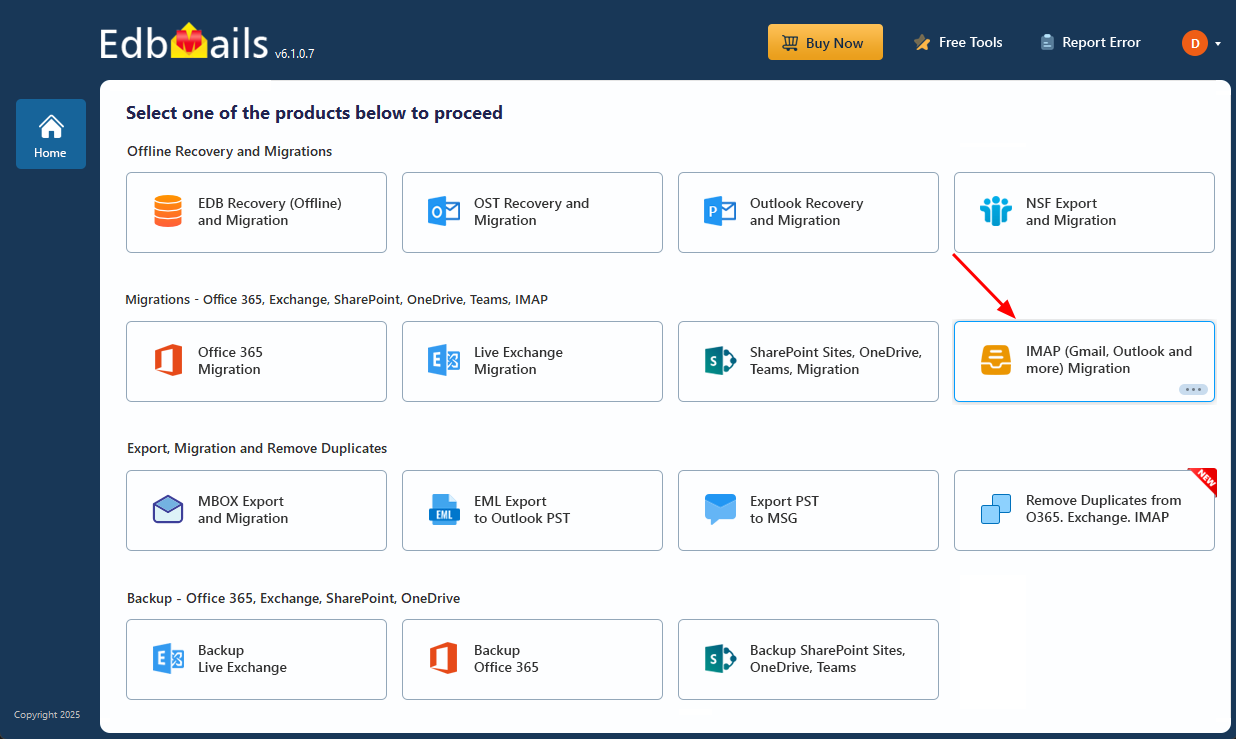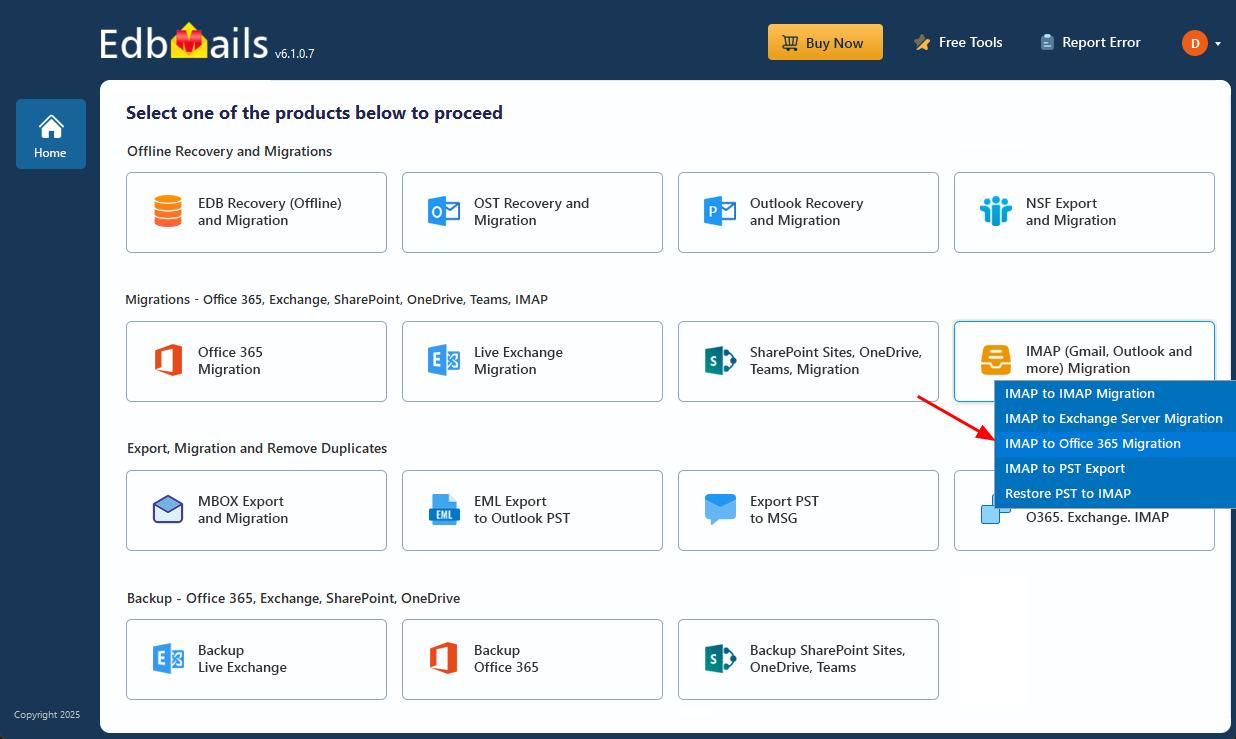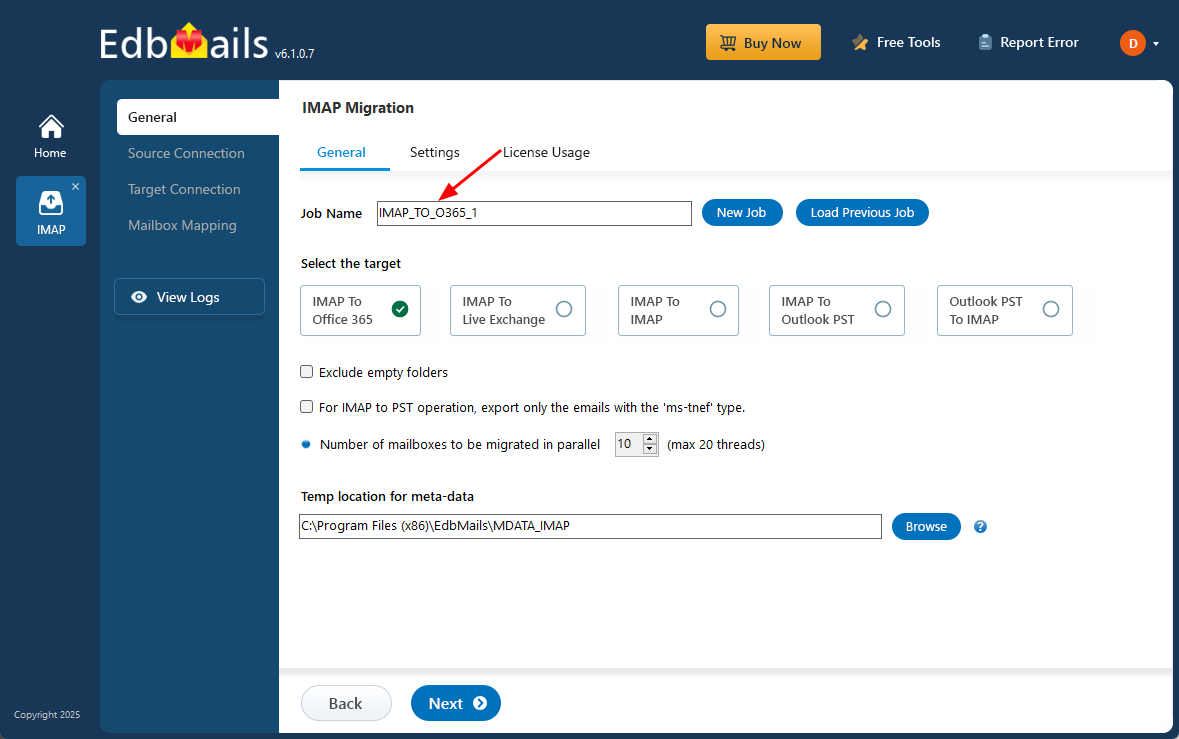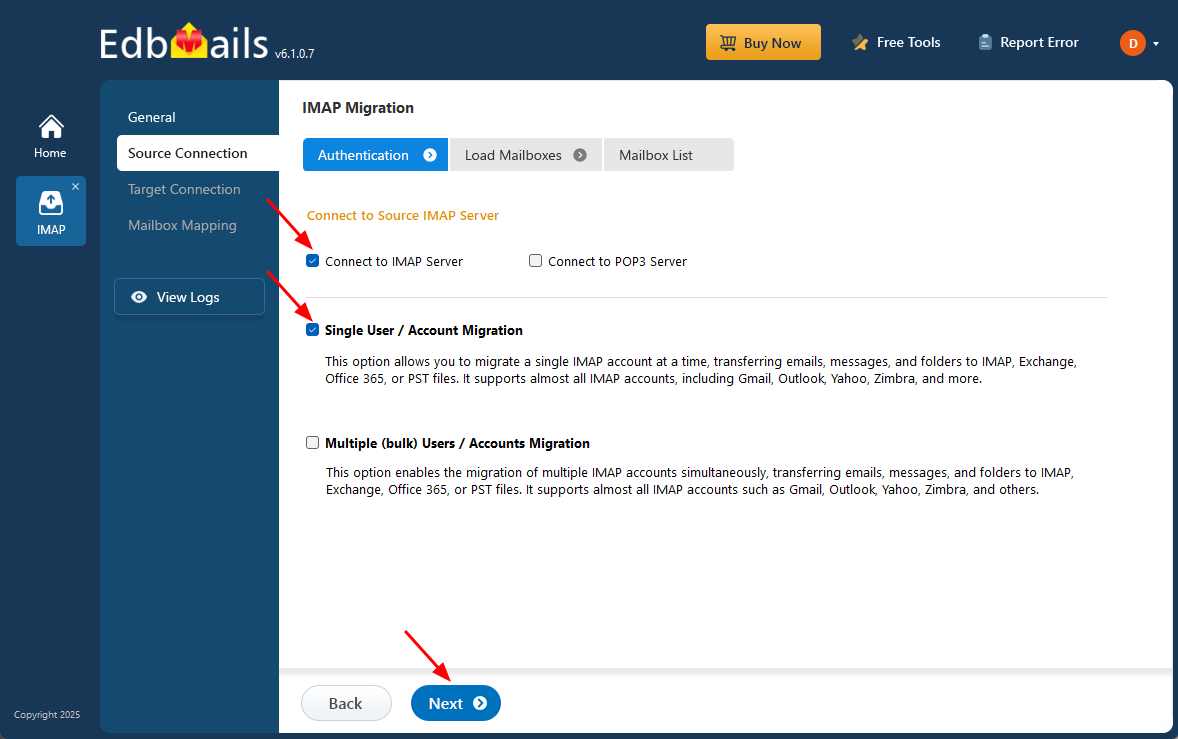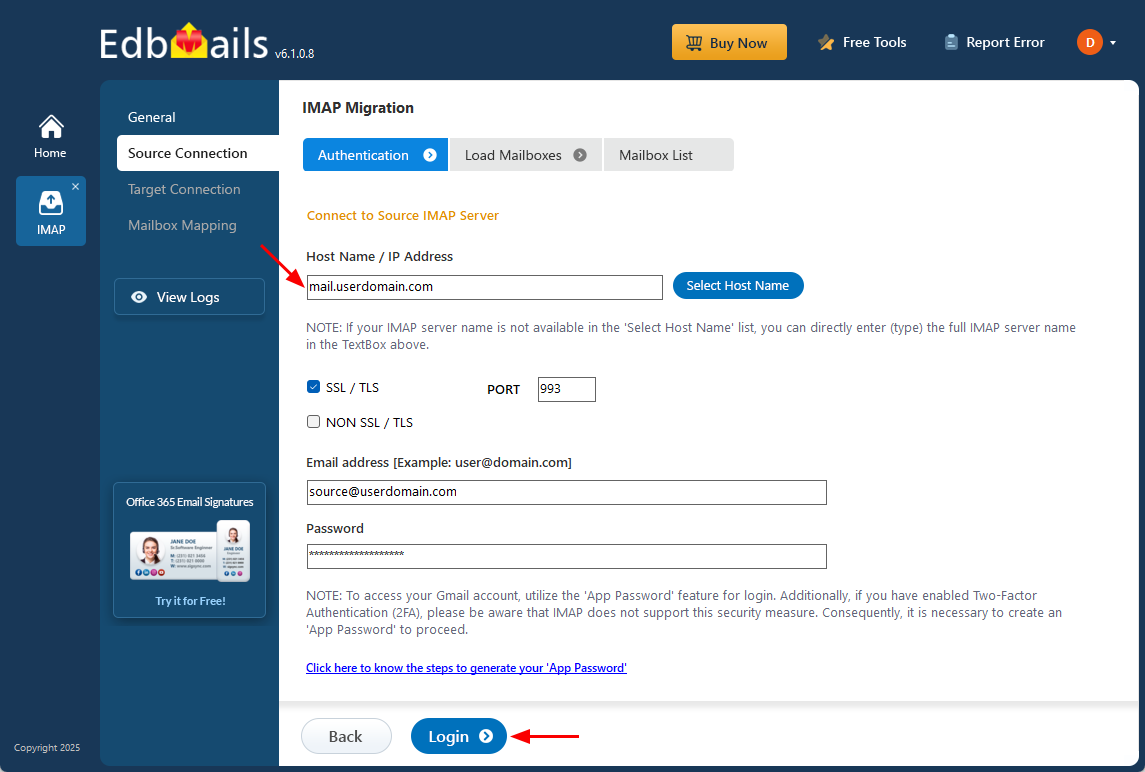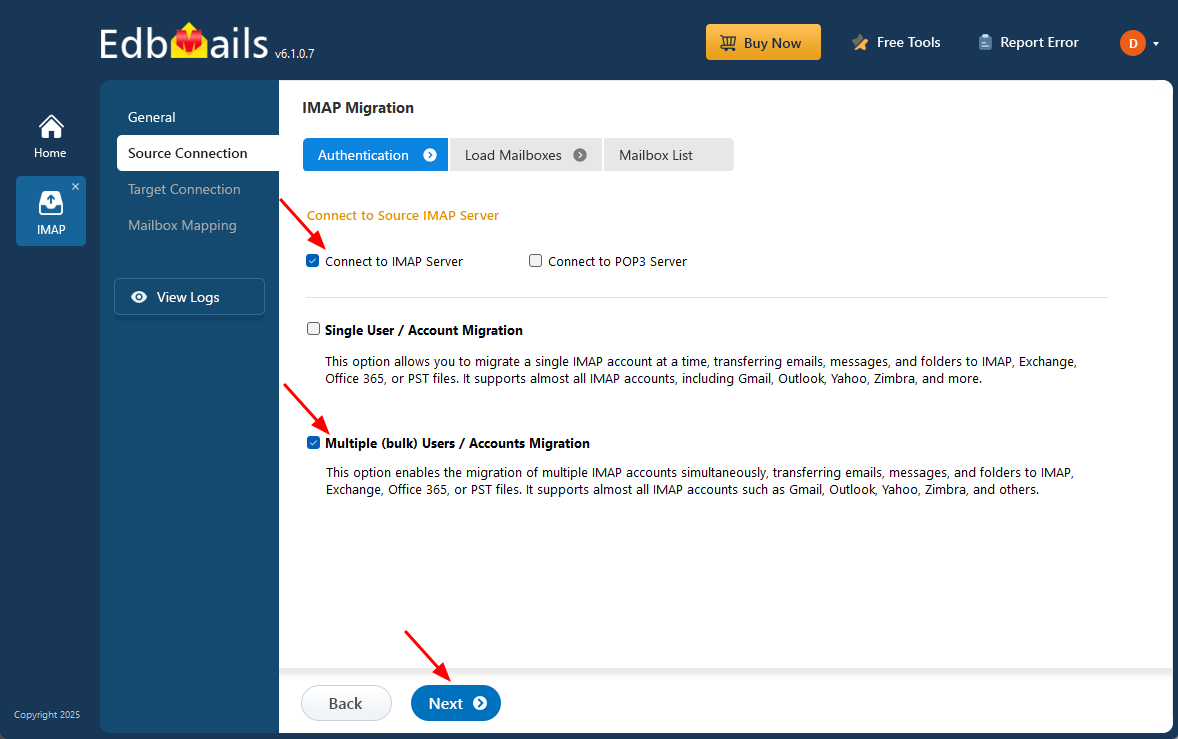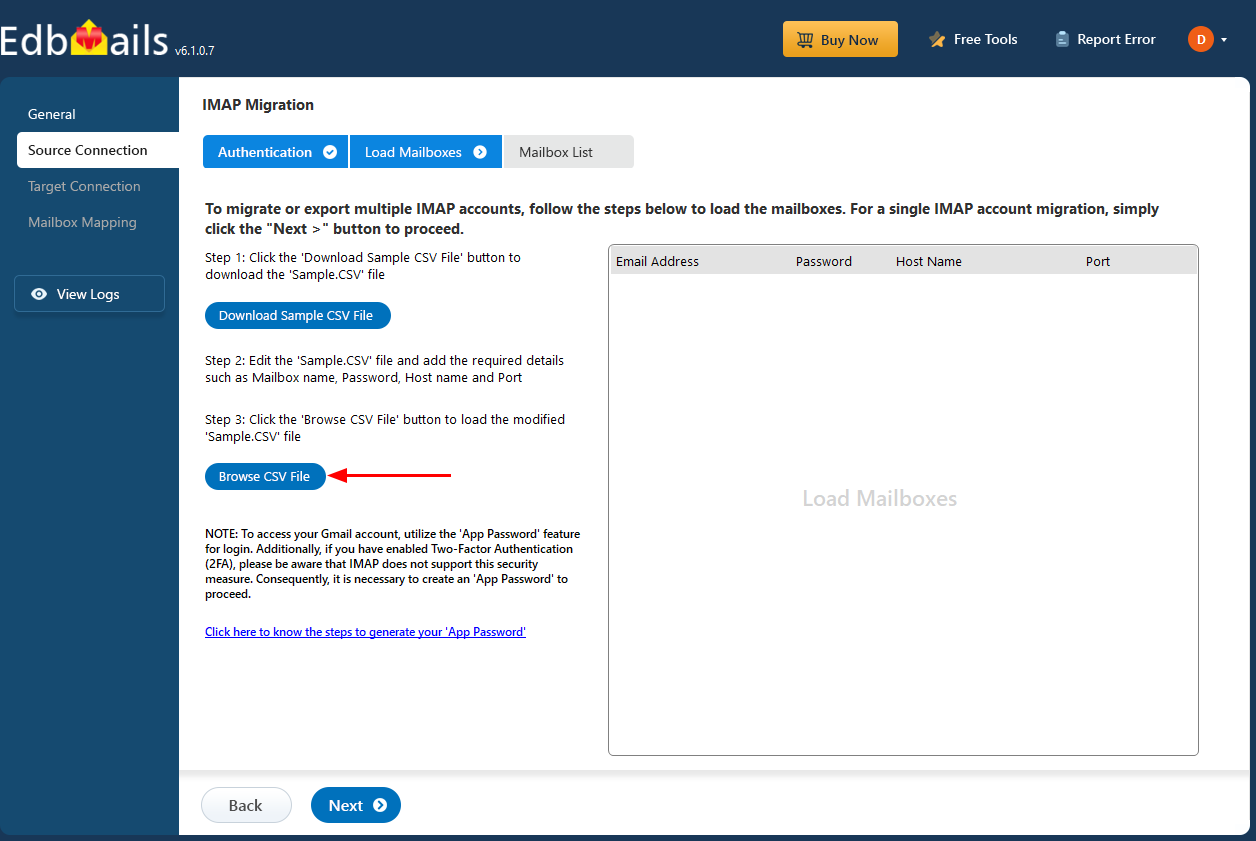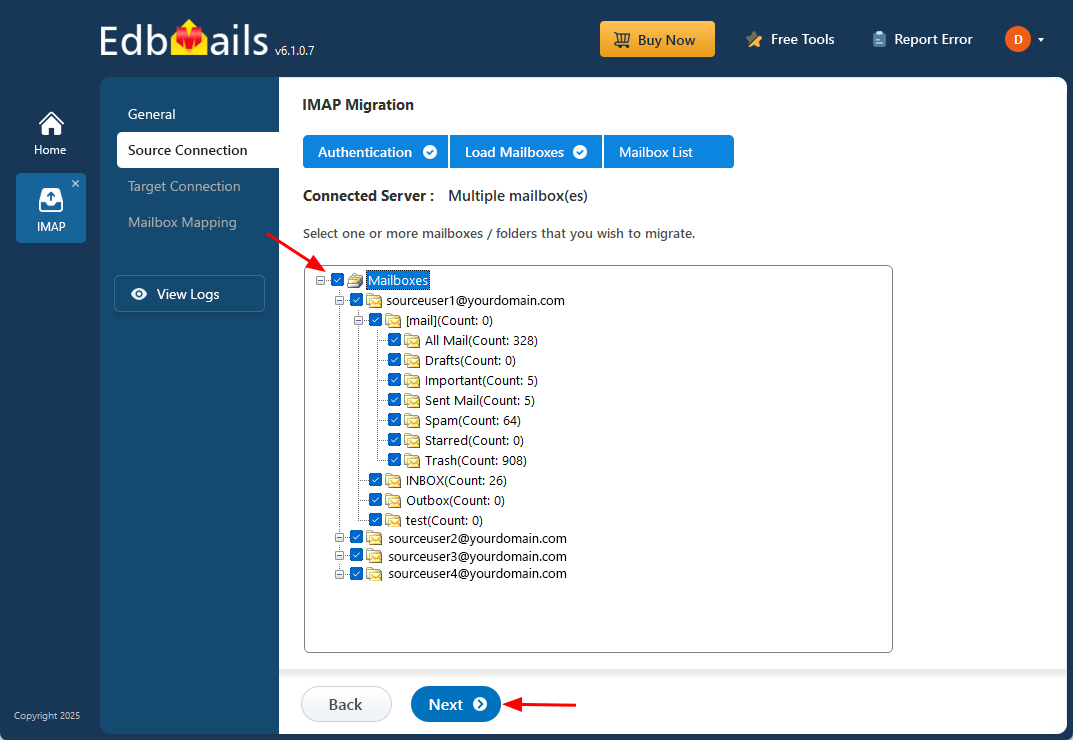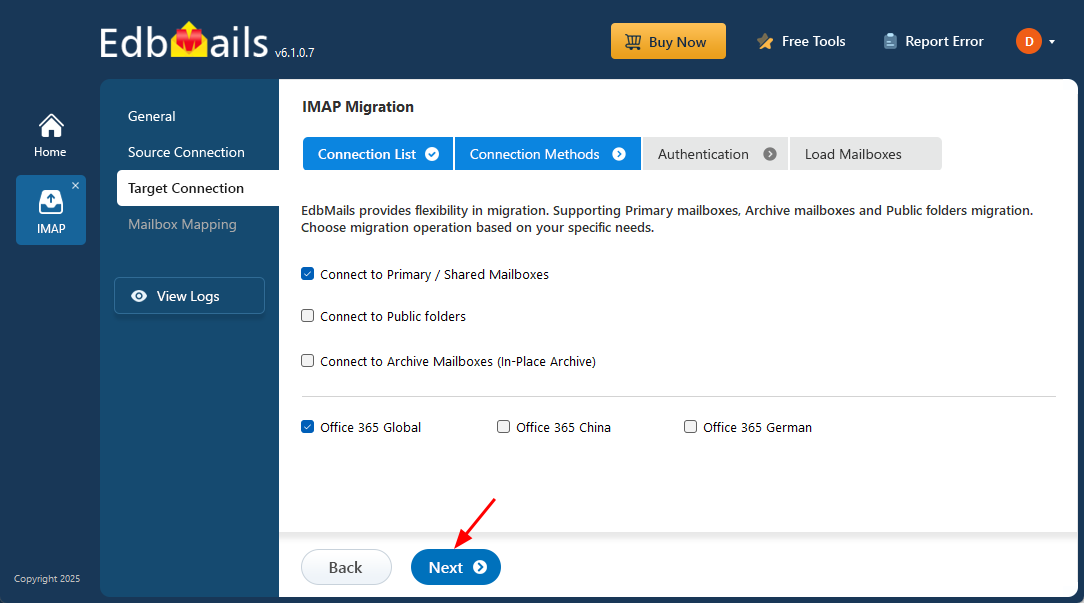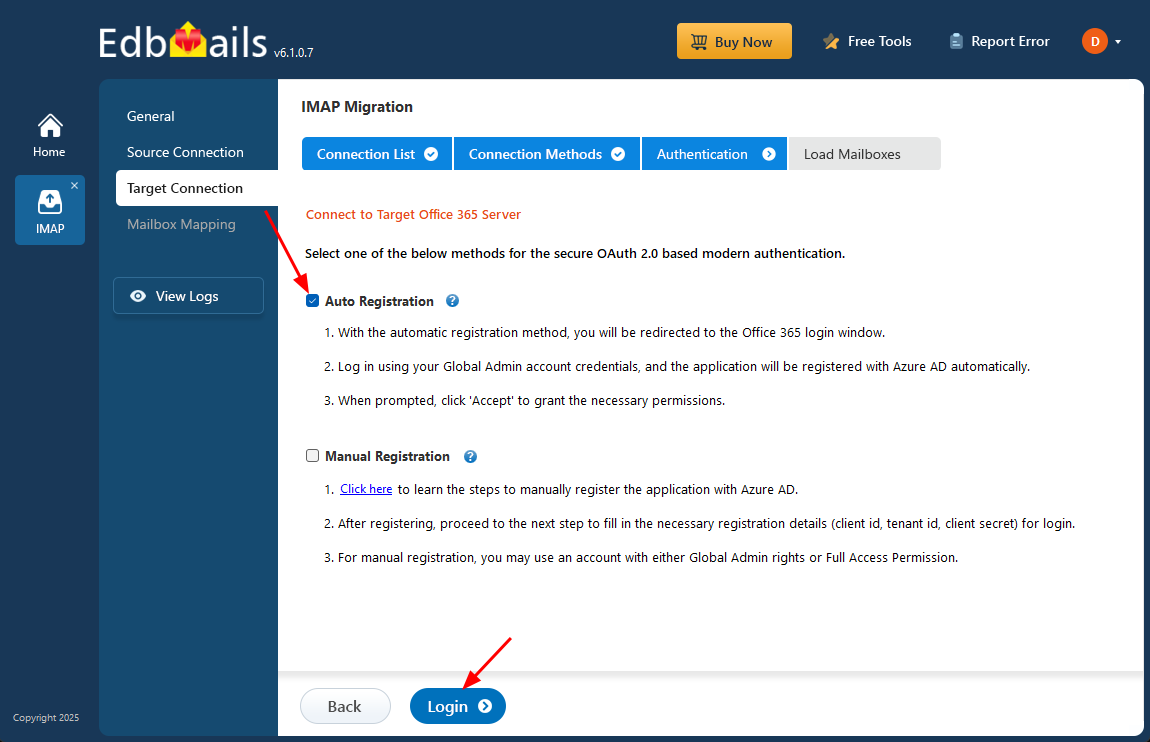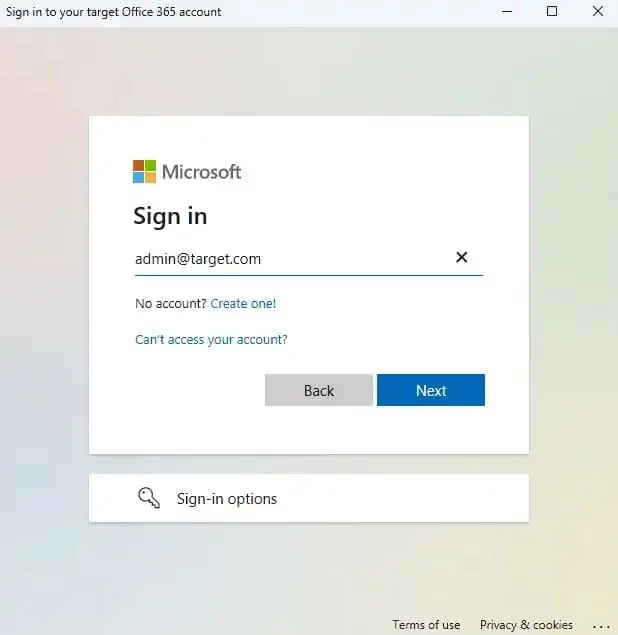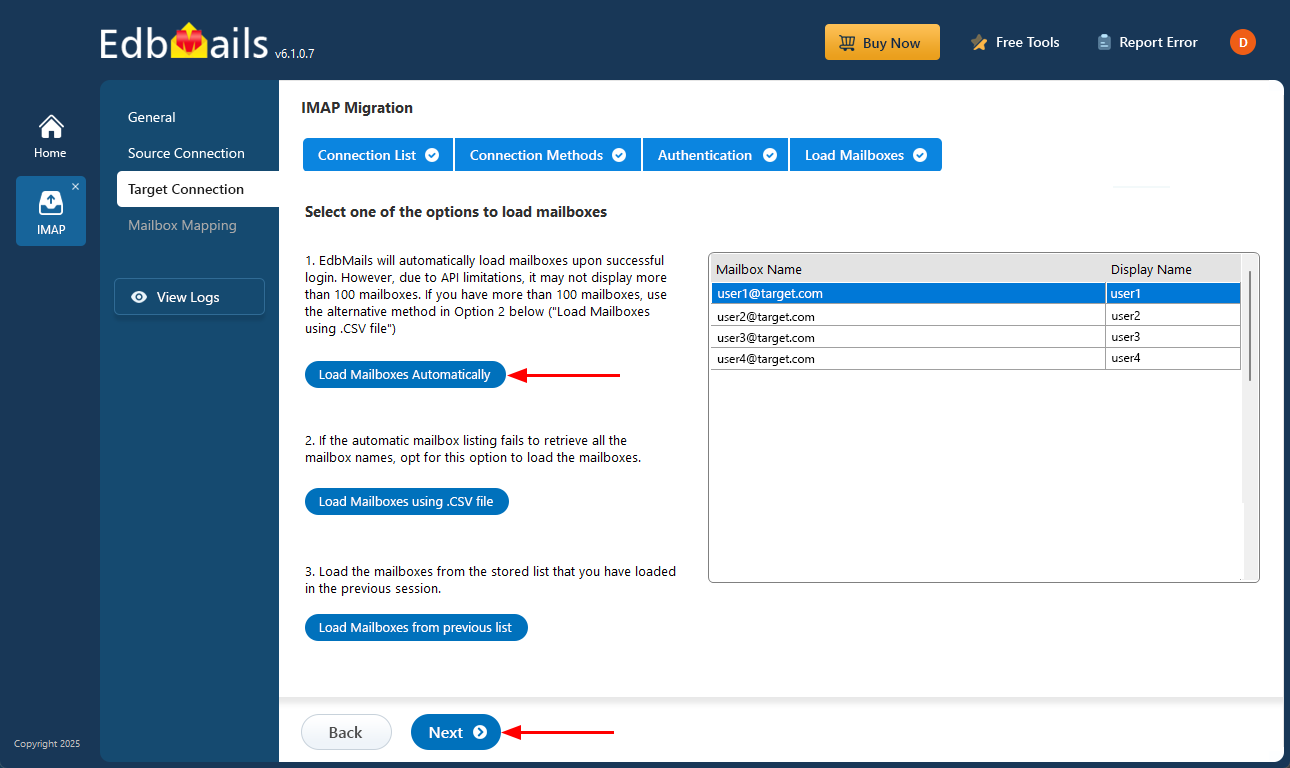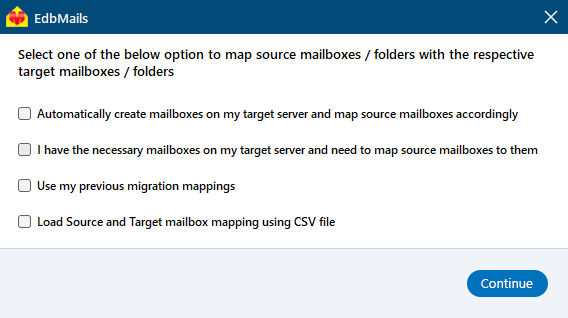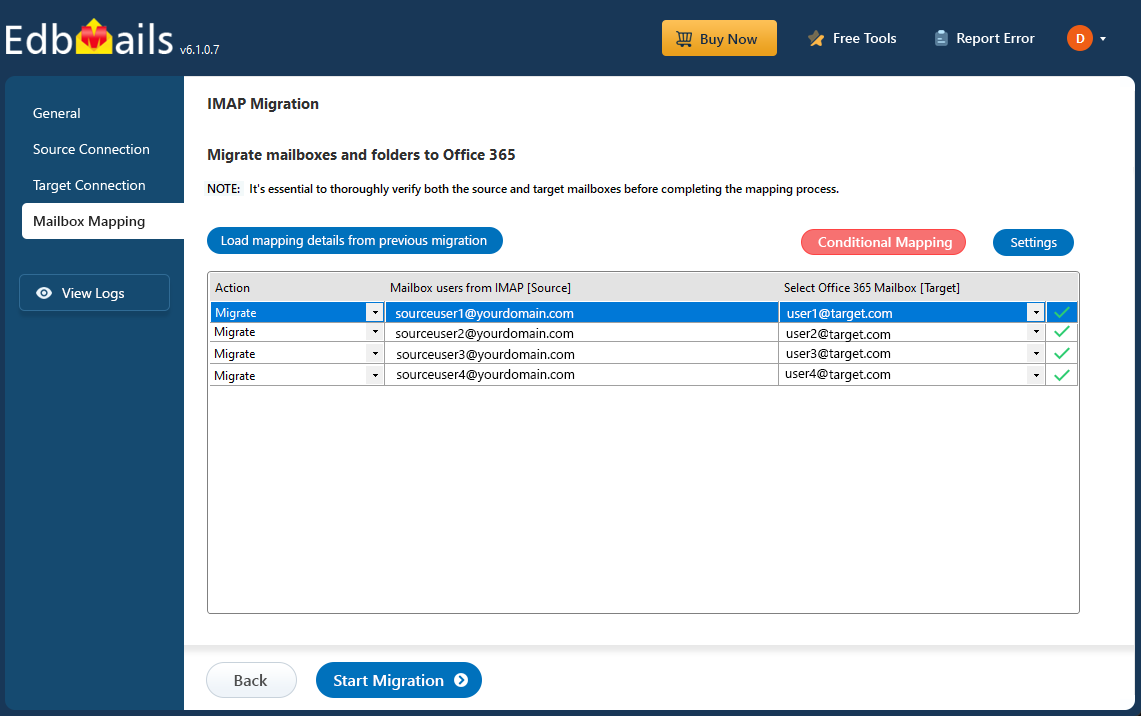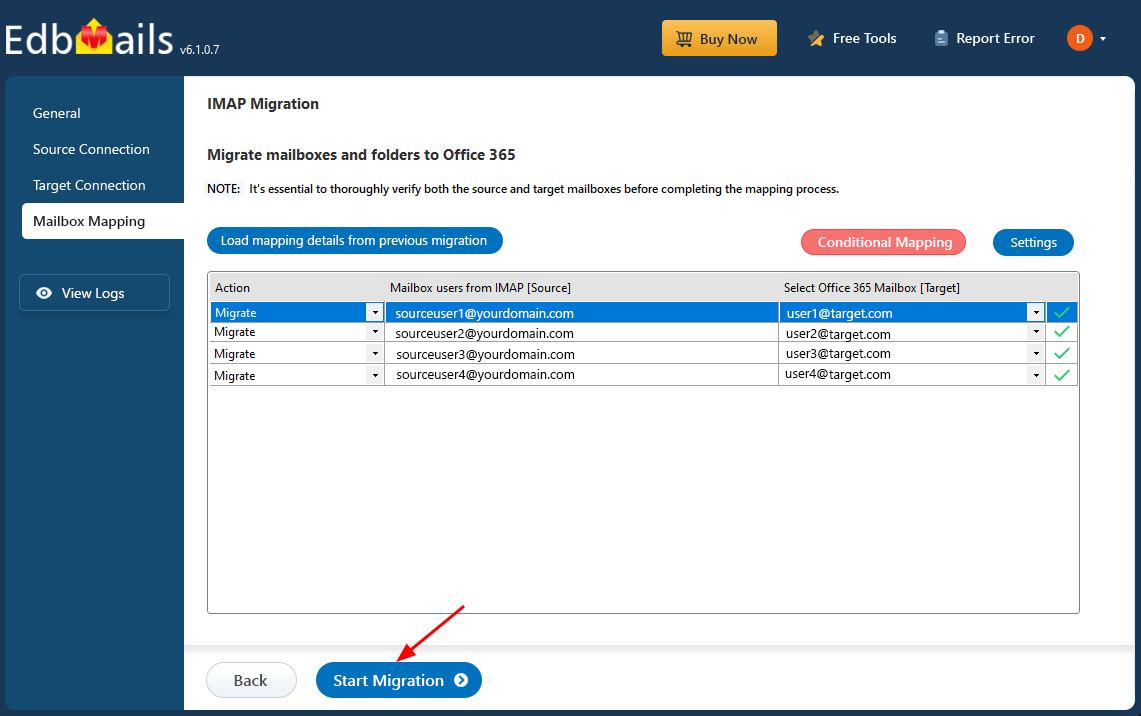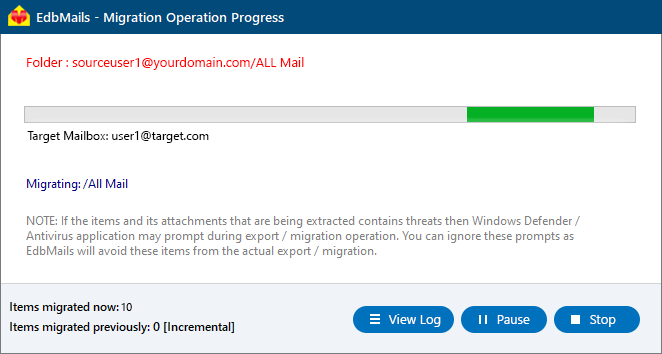ATT Email to Office 365 Migration
AT&T is a leading telecommunications provider in the United States, offering a range of services including internet, television, and email hosting. While AT&T's email platform supports both personal and business communications, many users are now transitioning to more advanced solutions such as Microsoft Office 365. With its cloud-based architecture, seamless integration with Microsoft applications, and enterprise-grade security, Office 365 delivers a comprehensive solution for enhanced email management, collaboration, and productivity.
However, migrating from AT&T email to Office 365 can be challenging, particularly for users unfamiliar with the technical aspects. Native migration methods often require manual configurations and carry risks such as data loss, interrupted service, or incomplete transfers. These approaches can also be time-consuming and prone to errors, especially in large-scale or multi-user environments.
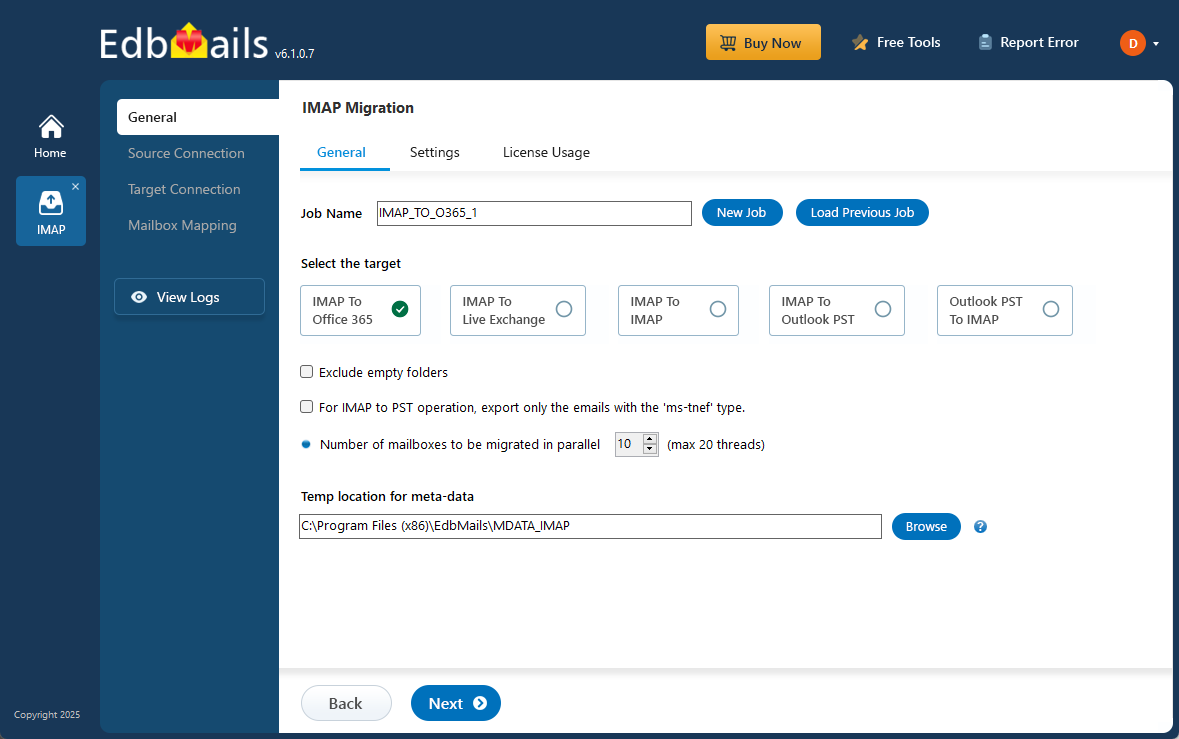
Fortunately, EdbMails IMAP migration software offers a seamless and automated solution for AT&T to Office 365 migration. This powerful tool simplifies the entire process, allowing users to securely transfer their email data, including attachments, without the need for manual configurations.
EdbMails further simplifies ATT email to Office 365 migration by automatically creating Office 365 mailboxes, which is particularly helpful for organizations managing multiple users. This eliminates the need for manual mailbox setup, saving time and reducing errors. EdbMails also offers automatic mailbox mapping, ensuring that the source and destination mailboxes are correctly aligned without manual intervention. Additionally, the tool provides flexibility with customized target folder selection, allowing you to organize your migrated emails as needed. Whether replicating the original folder structure or creating new hierarchies, EdbMails adapts to your preferences. With its script-free migration, automatic configurations, and efficient customization options, transitioning to Office 365 is both secure and hassle-free.
User Query
"I am currently using AT&T email services and would like to migrate all my emails, including attachments, to Office 365. Could someone guide me on how to perform the migration? I’m unfamiliar with the migration process and would appreciate step-by-step instructions to ensure a smooth transition."- Smith, Berlin
Why do users migrate emails from ATT to Microsoft 365?
- Microsoft 365 allows users to integrate AT&T email into Outlook 365 for unified email management, reducing the need to switch between platforms.
- Outlook 365 offers advanced features such as intelligent sorting, categorization, and powerful search capabilities, improving email organization and retrieval.
- Users can access emails, calendar events, and contacts offline, ensuring productivity even without an internet connection.
- Seamless integration with other Microsoft services like OneDrive, Teams, and SharePoint creates a centralized workspace for communication and collaboration.
- Microsoft 365 offers scalable storage, allowing users to adjust storage space according to their needs.
For these reasons, many users choose to migrate from AT&T email to Office 365 using EdbMails.
Common Migration Challenges & Solutions
1. Authentication Errors
Challenge: Users may face login or authentication failures, especially if basic authentication is disabled.
Solution: EdbMails fully supports OAuth 2.0 modern authentication and App Passwords for secure login. This eliminates credential-based errors and ensures compliance with Microsoft’s latest authentication standards.
2. Slow Transfer Speed
Challenge: Large mailboxes or limited bandwidth can cause slow migration speeds.
Solution: EdbMails optimizes data transfer using multi-threaded migration to avoid throttling. Additionally, its delta migration feature transfers only new or updated emails, improving performance and minimizing repeated data transfer.
3. Folder Mismatch Issues
Challenge: Source and destination folders may not align properly, leading to misplaced emails or incomplete folder mapping.
Solution: EdbMails includes automatic mailbox and folder mapping, for aligning system folders (like Inbox, Sent, Drafts).
ATT email to Office 365 migration plan
Planning is one of the most important steps before you begin the ATT email to Office 365 migration. Here is a checklist of points to consider before you migrate.
- Determine the size of the data and the number of mailboxes you want to migrate.
- Make a list of all the data and permissions from the ATT email that you want to transfer.
- Create appropriate user mailboxes on Office 365 and assign licenses to them.
- Ensure you have enough network capacity and bandwidth to migrate.
- Communicate the migration plan and flow to your end users.
ATT email to Microsoft 365: Pre-migration activities
- Find the IMAP server name of your ATT email server. You can find this information from your server’s dashboard settings or by connecting your email system to Outlook.
- Have the users email address, passwords, IMAP hostname and port number.
- Create mailboxes on your target Office 365 server. You can choose the option to automatically create target mailboxes in EdbMails. If you prefer to create them manually, refer to the links below.
- If you have a custom email domain from your hosting provider to which you want to migrate and receive emails, you must add and verify the domain on Office 365.
Steps to add a custom domain to Office 365 and Steps to add DNS records to connect your domain.
- Configure Office 365 to send and receive large messages.
Follow the steps to increase the message size on Office 365 to 150MB and see tips to optimize IMAP migration to Exchange online.
Steps to migrate emails from ATT to Office 365 using EdbMails
Step 1: Download and install EdbMails IMAP migration software
- Download and install EdbMails IMAP migration software
- Launch the EdbMail application and log in using your registered email address and password. If you don’t have an account, click ‘Start Your Free Trial’ to begin using EdbMails instantly without registration.
- Choose the ‘IMAP (Gmail, Outlook and more) Migration’ option to begin the transfer process.
- Select ‘IMAP to Office 365 Migration’.
- You can proceed with the default job name or click on ‘New Job’ to create and customize a job name according to your preference.
Step 2: Connect to the source ATT email server
- To migrate a single AT&T email account, choose the ‘Single User / Account Migration’ option and click ‘Next’ to proceed.
- Select the correct IMAP host name for the ATT server from the list, or enter it manually if unavailable. Then, provide your ATT server email address and the associated password to authenticate the connection.
- After entering the required credentials, click the ‘Login’ button to allow EdbMails to establish a secure connection with your ATT server mailbox and fetch the data for migration.
- To migrate multiple ATT server mailboxes, choose the ‘Multiple (Bulk) Users/Accounts Migration’ option and click ‘Next’.
- Click ‘IMAP Migration CSV File’ and choose a destination folder on your local computer to save the CSV file.
- Open the CSV file and enter the required details such as each user’s email address, password, IMAP server hostname, and port number. Once all information is added, save your changes and close the CSV file.
- Now, click the 'Load Modified CSV File' button, open the CSV file and click ‘Next’ to proceed.
Step 3: Select the mailboxes or folders to migrate
- Select the mailboxes or specific email folders you want to migrate from your AT&T server account. You can choose all mail items or filter by folders such as Inbox, Sent Items, or Custom Folders based on your requirements. Once selected, click ‘Next’ to proceed with the migration process.
Step 4: Connect to target Office 365 server
- Click the ‘Add New Connection’ button to set up a new connection to your target Office 365 account. If you want to use an existing connection, simply select it from the list and click ‘Connect to Existing’
- Select the appropriate connection settings based on your migration requirements, then click ‘Next’ to proceed to the next step.
- Choose your preferred secure authentication method for the target Office 365 and click the ‘Login’ button.
- Authenticate by signing in through the official Microsoft login page using your Office 365 credentials.
- After logging into your target Office 365 server, select how you’d like to load the mailboxes. EdbMails will automatically display the available mailboxes, but because of Microsoft API limitations, it may only show up to 100. If you have more than 100 mailboxes, choose the ‘Load Mailboxes using .CSV file’ option.
Step 5: AT&T email to Office 365 mailboxes mapping
- Select a preferred option to map the source mailboxes and folders with their corresponding mailboxes and folders on the target Office 365 account.
- EdbMails lets you automatically create the required mailboxes in your target Office 365 account.
- It also automatically maps your source Hostmonster mailboxes and folders to the matching ones in Office 365, making large migrations easier to manage.
Step 6: Start the AT&T to Office 365 migration
- Review and confirm the mailbox mapping to ensure accuracy. Once verified, click the ‘Start Migration’ button to initiate the transfer to Office 365.
- Click the ‘View Logs’ button to access the full migration report. The report provides detailed information, including the mailbox mapping, an overall summary of the migration, and the item count for each mailbox and folder that was migrated.
ATT email to Microsoft 365 post-migration tasks
- Step 1: Update the MX records to point to Office 365
If you have not done this step previously, Change the MX records to enable and receive email messages on the target Office 365 server. In addition, configure the Autodiscover record to allow Outlook to connect to the migrated mailboxes.
- Step 2: Create a new Outlook profile for users in the new domain
Configure and recreate the Outlook profile for each user in your domain if Outlook has problems connecting to Office 365 mailboxes.
- Step 1: Update the MX records to point to Office 365
ATT email to Office 365 migration troubleshooting
For troubleshooting, check out our knowledge base articles. If you have additional questions, browse the FAQs or contact our dedicated support team for personalized assistance.
Benefits of EdbMails for ATT email to Office 365 migration
- Advanced filters for precise migration
EdbMails provides advanced filtering options to help you select specific emails for migration based on criteria like date range, subject, or attachment type. This feature allows for more control over the migration process, ensuring only relevant data is transferred and reducing unnecessary load.
- Support for multiple accounts
With EdbMails, users can migrate multiple AT&T email accounts to Office 365 in one go. This feature streamlines the migration process for businesses managing several accounts, saving time and resources while ensuring that all email data is accurately transferred without any complications.
- Error-free data transfer
EdbMails guarantees a secure and error-free migration by employing advanced algorithms that ensure accurate data transfer. This means no email data or attachments are lost during the migration process, allowing businesses to maintain the integrity of their communications.
- Migrate IMAP emails with all attributes
EdbMails ensures a seamless transfer of IMAP emails, including all attributes like attachments, folder structure, and metadata. This feature helps preserve the original organization of the emails in Office 365, ensuring consistency and minimizing post-migration adjustments for the user.
- Auto-generated migration reports
EdbMails automatically generates detailed migration reports that track the entire process from start to finish. These reports provide valuable insights, including the number of migrated items, any errors encountered, and overall progress, giving users peace of mind and transparency throughout the migration process.
Frequently Asked Questions
- How long does an AT&T to Office 365 migration take?
The migration duration depends on factors such as mailbox size, number of users, internet speed, and server response time. Using EdbMails, small migrations can complete within a short time, while large-scale or organization-wide migrations may take longer. The tool supports delta migration, allowing users to continue from where they left off without restarting.
- Does EdbMails migrate attachments and contacts?
Yes. EdbMails migrates all mailbox items, including emails, attachments, folders, and metadata via secure IMAP transfer.
However, since AT&T email uses IMAP protocol, it supports email and attachment migration only. Contacts and calendars are not included in IMAP migrations (this is a protocol limitation, not a tool restriction).



